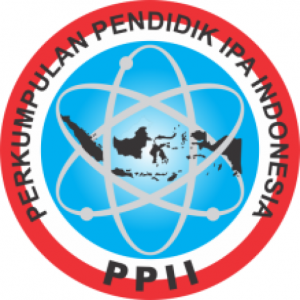Utilization of Natural Milk Coagulant in The Processing of Indigenous Dairy Product (Palopo)
Authors
Alwi Agil , Bulkaini Bulkaini , Baiq Rani Dewi Wulandani , Djoko Kisworo , Fahrullah FahrullahDOI:
10.29303/jbt.v25i4.10356Published:
2025-10-30Issue:
Vol. 25 No. 4 (2025): Oktober-DesemberKeywords:
Biduri sap, Eggplant para, Palopo coagulant, Papaya sapArticles
Downloads
How to Cite
Downloads
Metrics
Abstract
The objective of this study is to ascertain the impact of employing natural coagulants, namely eggplant para (Solanum indicum), biduri sap (Calotropis gigantea), and papaya sap (Carica papaya L.), on the chemical properties, antioxidant levels, and organoleptic properties of palopo. The present study employed a Completely Randomized Design (CRD), utilizing three natural coagulant treatments (eggplant, biduri sap, and papaya sap) each at 0.2% of the sample weight, with five replicates. The research variables encompassed pH, water content, ash, crude protein, crude fat (utilizing the proximate analysis method), antioxidant content (employing the DPPH method), and organoleptic values (aroma, taste, colour, texture, and overall acceptance) (using the hedonic method). The findings indicated that the type of coagulant employed exerted a highly significant effect (P<0.01) on the water content, protein and antioxidant levels of palopo, while no significant effect (P>0.05) was observed on pH, fat content, and ash content. The utilization of eggplant (Solanum indicum) as a natural coagulant resulted in a high level of protein in palopo (7.33%), while the application of papaya latex (Carica papaya L.) led to a higher level of antioxidants in palopo (80.05%) compared to other types of coagulants. The incorporation of natural coagulant eggplant parboil can yield palopo that is particularly prized for its optimal texture and palatability. Conclusion: The incorporation of natural coagulant Eggplant (Solanum indicum) in the manufacturing process of palopo ensures optimal chemical quality and acceptance, while papaya latex (Carica papaya L.) contributes the highest antioxidant content, thereby possessing the potential to enhance the functional value of the product.
References
Ardat, M.A., Wulandari Z., & Arief, I.I. (2022). Efektivitas Konsentrat Papain Bubuk, Getah Pepaya Segar, dan Papain Komersial sebagai Koagulan dalam Pembuatan Dangke. Jurnal Ilmu Pertanian Indonesia (JIPI), 27 (4): 620626. DOI: 10.18343/jipi.27.4.620.
Babalola, B.A., Akinwande, A.I., Otunba, A.A., Adebami, G.E., Babalola, O., & Nwufo C. (2024). Therapeutic benefits of Carica papaya: A review on its pharmacological activities and characterization of papain. Arabian Journal of Chemistry, 17(1): 1-11. https://doi.org/10.1016/j.arabjc.2023.105369
Canini, A., Alesiani D., D’Arcangelo G., & Tagliatesta P. (2007). Gas chromatography–mass spectrometry analysis of phenolic compounds from Carica papaya L. leaf. Journal of Food Composition and Analysis, 20 (7) : 584-590. https://doi.org/10.1016/j.jfca.2007.03.009
Coroian, A., Erler S., & Matea C.T. (2013). Seasonal changes of buffalo colostrum: physicochemical parameters, fatty acids andcholesterol variation. Chemistry Central Journal, 7 (40). https://doi.org/10.1186/1752-153X-7-40
Dinas Peternakan dan Kesehatan Hewan Provinsi NTB. (2024). Populasi Hewan Ternak di Provinsi NTB. Mataram, Nusa Tenggara Barat.
Dolinsky, M., Agostinho C., Ribeiro, D., Rocha G.D.S., Barroso S.G., Ferreira, D., & Fialho, E. (2015). Effect of different cooking methods on the polyphenol concentration and antioxidant capacity of selected vegetables. Journal of Culinary Science & Technology, 14 (1) :1–12. https://doi.org/10.1080/15428052.2015.1058203
Febrina, L. (2010). Analisis usaha ternak kerbau pada ketinggian tempat yang berbeda di Provinsi Sumatera Barat. Tesis Program Pascasarjana Universitas Andalas, Padang.
Fox, P.F., Guinee, T.P., Cogan, T.M., & McSweeney, P.L.H. (2017). Enzymatic Coagulation of Milk In Fundamentals of Cheese Science. Springer. Boston. 185–229. https://link.springer.com/book/10.1007/978-1-4899-7681-9
Hamid, M.A., Goda, H.A., Gobba, C.D., Jenssen, H., & Osman, A. (2016). Antibacterial activity of papain hydrolysed camel whey and its fractions. International Dairy Journal, 61:91-98. https://doi.org/10.1016/j.idairyj.2016.04.004
Iqubal, M., Sharma S.K., Mujahid, M., & Hussain, M.S.(2022). An updated ethnobotany, phytochemical and pharmacological potential of Solanum indicum L. Journal of Drug Delivery and Therapeutics, 12 (2):160-172. http://dx.doi.org/10.22270/jddt.v12i2.5385
Islam, M.A., Basunia, M.H.K., Rahman, A., Bari, M.S., Rahman M.F., Mannan M.A. & Datta, T.K. (2021). Effect of coagulants on the chemical and microbial quality of fresh cheese. Bangladesh Journal of Animal Science, 50(2):73-79. https://doi.org/10.3329/bjas.v50i2.58024
Jamdar, S.N., Kumar, A., Srivastava G., & Makde, R.D. (2025). Crystal Structure of Papain-Like Cysteine Protease, Calotropain FI, Purified from the Latex of Calotropis gigantea. Journal of Agricultural and Food Chemistry, 73 (15). https://pubs.acs.org/doi/10.1021/acs.jafc.4c10898.
Jost, R. & Monti J.C. (1977). Partial Enzymatic Hydrolysis of Whey Protein by Trypsin. Journal of Dairy Science, 60 (9): 1387-1393. https://bit.ly/4pbIwAr
Joye, I.J. & McClements, D.J. (2014). Emulsifying and Emulsion-Stabilizing Properties of Gluten Hydrolysates. Journal of Agricultural and Food Chemistry, 62 (12). https://pubs.acs.org/doi/10.1021/jf5001343
Karolkowski, A., Belloir, C., Lucchi, G., Martin, C., Bouzidi, E., Levavasseur, L., Salles, C., & Briand, L. (2023). Activation of Bitter Taste Receptors by Saponins and Alkaloids Identified in Faba Beans (Vicia faba L. minor). Food Chemistry, 426. https://doi.org/10.1016/j.foodchem.2023.136548
Khan, S.U., Pal M.A., Wani, S.A., & Salahudin, M.(2014). Effect of different coagulants at varying strengths on the quality of paneer made from reconstituted milk. J Food Sci Technol, 51: 565–570. https://doi.org/10.1007/s13197-011-0525-7
Kisworo, D. (2022). Chemical and Organoleptic Properties of Palopo (Local Soft Cheese) Produced Using Natural Additive as Milk Coagulant. Asian Journal of Applied Research for Community Development and Empowerment, 6 (2): 9-14. https://doi.org/10.29165/ajarcde.v6i2.93
Kumar, N., Pruthi, V., & Goel, N. (2015). Structural, thermal and quantum chemical studies of p-coumaric and caffeic acids. Journal of Molecular Structure, 1085 : 242-248. https://doi.org/10.1016/j.molstruc.2014.12.064
Kumarasinghe, H.S., Kim, J.H., Kim, S.L., Kim K.C., Perera R.M.T.D., Kim S.C., Lee D.S. (2024). Bioactive constituents from Carica papaya fruit: implications for drug discovery and pharmacological applications. Applied Biological Chemistry, 67 (103). https://doi.org/10.1186/s13765-024-00962-y
Lin, S., Gandara, J.S., Cao, H., & Xiao, J. (2023). The stability and degradation products of polyhydroxy flavonols in boiling water. Current Research in Food Science, 6. https://doi.org/10.1016/j.crfs.2023.100509
Malaka, R., Prahesti, K.I., Mahendradatta, M., Astawan, M., Putranto, W.S., Arief F.A., Waqiah S.N., & Kadir, R.W. (2024). Physicochemical Properties of Dangke-cheese by Different Temperature Processing and Papaya-latex as Coagulant. Indian Journal of Agricultural Research, 58 (5): 911-916. https://arccjournals.com/journal/indian-journal-of-agricultural-research/AF-882?utm
Matondang, R.H. & Chalid, T. (2015). Pemanfaatan Ternak Kerbau Untuk Mendukung Peningkatan Produksi Susu. Jurnal Litbang Peternakan, 34 (1) :41-49. https://repository.pertanian.go.id/handle/123456789/1217
Minieri, L., Franciscis, G.D., & Intrieri, F. (1965). On behavior of pH value in relation to acidity and chemical constituents of milk: research in Bubalus buffalus. Acta medica Veterinaria-Journal, 11(1): 107-114. https://pubmed.ncbi.nlm.nih.gov/5849085/
Murador, D., Braga, A.R., Da Cunha, D., & De Rosso V. (2017). Alterations in phenolic compound levels and antioxidant activity in response to cooking technique effects: A meta-analytic investigation. Critical Reviews in Food Science and Nutrition, 58 (2): 169–177. https://doi.org/10.1080/10408398.2016.1140121
Murti, TW. (2002). Ilmu Ternak Kerbau. Penerbit Kasinus. Yogyakarta.
Nastasiienko, N., Kulik, T., Palianytsia, B., Larsson M., Cherniavska, T., & Kartel, M. (2021). Decarboxylation of p-Coumaric Acid during Pyrolysis on the Nanoceria Surface. Colloids Interfaces, 5(4):1-11 https://doi.org/10.3390/colloids5040048
Nogueira, L.S., Tavares, I.M.C., Santana, N.B., Ferrão, S.P.B., Teixeira, J.M., Costa, F.S., Silva, T.P., Pereira, H.J.V., Irfan, M., Bilal M., Oliveira, J.R.,& Franco, M. (2021). Thermostable trypsin-like protease by Penicillium roqueforti secreted in cocoa shell fermentation: Production optimization, characterization, and application in milk clotting. Biotechnology and Applied Biochemistry,69(5):1-12 https://doi.org/10.1002/bab.2268
Noviyanty, Y., Mulyani, E., & Ramdani, I.A. (2021). Identifikasi dan Penetapan Kadar Senyawa Saponin Dari Ekstrak Etanol Bunga Biduri (Calotropis gigantea L) dengan Metode Gravimetri. Jurnal Ilmiah Pharmacy, 8 (1): 136-147. https://bit.ly/3K8QPwP
Rajagopalan, A., Soundararajan, M., & Sukumaran, B.O. (2019). Proteases from Calotropis gigantea stem, leaf and calli as milk coagulant source. Turk J Biochem,44(3):240–247. https://doi.org/10.1515/tjb-2017-0268
Ramos, M.V., Araujoa, E.S., Jucaa, T.L., Moreira A.C.O.M., Vasconcelos I.M., Moreira R.A., Vianaa C.A., Beltramini L.M., Pereiraa D.A., Moreno, F.B. (2013). New insights into the complex mixture of latex cysteine peptidases in Calotropis procera. International Journal of Biological Macromolecules, 58:211-219. http://dx.doi.org/10.1016/j.ijbiomac.2013.04.001
Schlueter, N., Hardt, M., Klimek, J., & Ganss, C. (2010). Influence of the digestive enzymes trypsin and pepsin in vitro on the progression of erosion in dentine. Archives of Oral Biology, 55 (4): 294-299. https://doi.org/10.1016/j.archoralbio.2010.02.003
Srivastava, S., Singh, A.P., & Rawat, A.K.S. (2015). Comparative Botanical and Phytochemical Evaluation of Calotropis Procera Linn. and Calotropis Gigantea Linn. Journal of Applied Pharmaceutical Science, 5 (7): 041–047. DOI: 10.7324/JAPS.2015.50707
Sulistyo, B., Chairunnisa H., & Wulandari, E. (2018). Pengaruh Penggunaan Kombinasi Enzim Papain Dan Jus Lemon Sebagai Koagulan Terhadap Kadar Air, Berat Rendemen, dan Nilai Kesukaan Fresh Cheese. Jurnal Ilmu Ternak,18(1):8-15. DOI: 10.24198/jit.v18i1.15299
Tauber, H. and Kleiner, I.S. (1934). Some Enzymes Of Solanum Indicum. Journal Of Biological Chemistry, 105 (4) : 679-682. https://doi.org/10.1016/S0021-9258(18)75503-8
Tsibranska, S., Tcholakova, S., Golemanov, K., Denkov, N., Pelan, E., Stoyanov, S.D. (2020). Role of Interfacial Elasticity For The Rheological Properties of Saponin-Stabilized Emulsions. Journal of Colloid and Interface Science, 564 : 264-275 https://doi.org/10.1016/j.jcis.2019.12.108
United States Department of Agriculture (USDA). (2001). Specification for Cottage Cheese and Dry Curd Cottage Cheese. Agricultural Marketing Service USDA. https://bit.ly/4629QZi
Zhang, H., Zhao, X., Chen, X., & Xu,X. (2022). Thoroughly review the recent progresses in improving O/W interfacial properties of proteins through various strategies. Frontiers in Nutrition, 9:1-21.https://doi.org/10.3389/fnut.2022.1043809
License
Copyright (c) 2025 Alwi Agil, Bulkaini Bulkaini, Baiq Rani Dewi Wulandani, Djoko Kisworo, Fahrullah Fahrullah

This work is licensed under a Creative Commons Attribution 4.0 International License.

Jurnal Biologi Tropis is licensed under a Creative Commons Attribution 4.0 International License.
The copyright of the received article shall be assigned to the author as the owner of the paper. The intended copyright includes the right to publish the article in various forms (including reprints). The journal maintains the publishing rights to the published articles.
Authors are permitted to disseminate published articles by sharing the link/DOI of the article at the journal. Authors are allowed to use their articles for any legal purposes deemed necessary without written permission from the journal with an acknowledgment of initial publication to this journal.


























